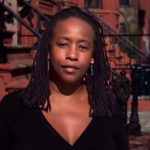Smart Cities New York (SCNY) is North America’s leading global conference exploring the emerging influence of cities in shaping the future. With the global smart city market expected to grow to $1.6 trillion within the next three years, Smart Cities New York is Powered by People and guided this year by its “Emerging Power Of Cities” theme. The conference brings together top thought leaders and senior members of the private and public sector to discuss investments in physical and digital infrastructure, health, education, sustainability, security, mobility, workforce development, and more, to ensure cities are central to advancing and improving urban life.
High-profile speakers and panelists have confirmed their participation at Smart Cities New York 2018, including:
- Stefano Boeri – Architect, Founder of Stefano Boeri Architetti, and Professor, Politecnico, Milano
- Alice Charles – Urban Development Lead, World Economic Forum
- Ali Chaudhry – Deputy Secretary for Transportation, Office of Governor Andrew M. Cuomo
- Peter Hirshberg – Principal & Co-Founder, Maker City Project
- Sarah Hunter – Director of Public Policy, X (Formerly Google [X])
- Don Katz – Founder & CEO, Audible, and Founder, Newark Venture Partners
- Bastian Lehmann – Co-Founder & CEO, Postmates
- Jeffrey Sachs – Director of SDSN, Co-Author of U.S. Cities SDG Index and Professor at Columbia University
- Andy Stern – President Emeritus, Service Employees International Union (SEIU)
- Mary Stuart Masterson – Actress, Filmmaker & Founder, Stockade Works
Website: www.smartcitiesny.com
Hashtags: #SCNY18 #SmartCitiesNY #PoweredbyPeople




















